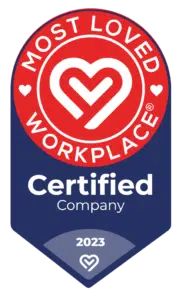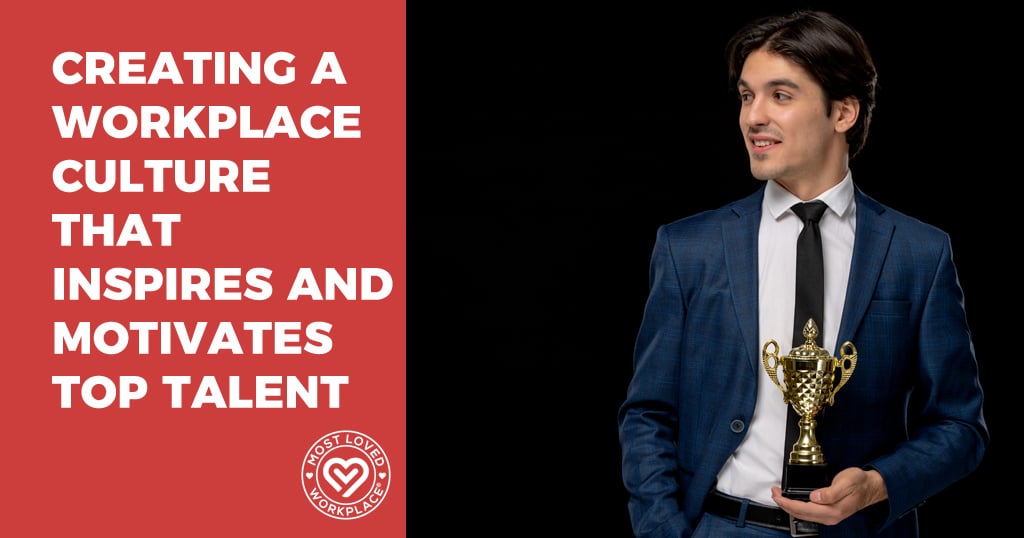9 Steps to Best Prepare Your Company for Your 2024 Most Loved Workplace® Survey
7 min. Read
Creating a positive workplace culture is paramount to attracting and retaining top talent. Participating in the Most Loved Workplace® Survey provides organizations with valuable insights into employee engagement, satisfaction, and overall workplace sentiment.
By taking proactive steps to prepare for the 2024 survey, companies can position themselves as employers of choice and drive meaningful change within their organizations. This article lists the benefits of participating in the Most Loved Workplace® Survey and provides actionable steps to help companies best prepare for the 2024 survey.
Table of Contents
Benefits of Being a Most Loved Workplace®
Companies that achieve the coveted title of Most Loved Workplace® experience a range of benefits, not only for the organization but also for its employees:
- 2-4X More Likely to Stay: Employees in Most Loved Workplaces® are significantly more likely to remain with the company for an extended period. This high retention rate fosters stability, continuity, and a strong sense of loyalty among the workforce.
- 4X More Likely to Do Their Best Work and Make Customers Happy: Engaged employees are more committed to delivering exceptional work and ensuring customer satisfaction. Most Loved Workplaces® cultivate an environment where employees feel empowered, motivated, and supported, resulting in superior performance and positive customer experiences.
- 2-4X More Likely to Produce More: A culture of engagement and satisfaction fuels productivity and innovation within Most Loved Workplaces®. Employees are inspired to go above and beyond, engage effectively, and contribute to the company’s success, leading to increased productivity and output.

Building a Thriving Workplace Culture!
Discover how to leverage the right technology and implement a proactive strategy that cultivates talent and facilitates team collaboration.
9 Steps to Prepare Your Company for the 2024 Most Loved Workplace® Survey
As your company gears up for the 2024 Most Loved Workplace® Survey, it’s crucial to lay the groundwork for success. By preparing well, you can ensure that your organization maximizes the benefits of participating in the survey and fosters a culture of employee engagement and satisfaction.
Below are some actionable steps to help you navigate the preparation process and position your company as a standout employer in the upcoming survey.
1. Understand the Purpose
Before diving into preparation, it’s crucial to understand the purpose and significance of the Most Loved Workplace® Survey. This survey measures employee engagement, satisfaction, and sentiment towards the workplace culture.
Understanding these key aspects allows organizations to align their efforts to create a positive and fulfilling work environment for their employees. By recognizing the importance of the survey’s purpose, companies can prioritize initiatives that address their workforce’s specific needs and preferences.
2. Review Previous Survey Results
If your company has participated in previous Most Loved Workplace® Surveys, take the time to review the results. Identify trends, areas of improvement, and note feedback from employees. Reflecting on past survey data provides valuable insights into your workforce’s evolving needs and expectations.
Organizations can identify recurring themes or issues by analyzing previous results and developing targeted strategies to address them effectively. This proactive approach showcases a commitment to continuous improvement and enhances the credibility of the survey process.
3. Communicate with Employees
Transparent communication is key to successful workplace initiatives. Inform your employees about the upcoming survey, its purpose, and how their feedback will drive positive organizational change. If you are sending the survey invitation from the Most Loved Workplace® platform, ensure your employees know that it’s coming and that it’s safe to click on.
Engaging employees in the survey fosters a sense of ownership and demonstrates their voices are valued. Encourage open dialogue and address employees’ concerns or questions about the survey. A culture of transparency and inclusivity allows organizations to build trust and enhance employee participation in the survey.
4. Decide on the Best Delivery Plan
If your employees are all at desks with computers and email addresses, it’s relatively easy to send the survey via email. But if your workforce is in the field, on their feet, or part-time, you might need to be creative in how you distribute the survey. Consider sending text messages to your employees. Some Most Loved Workplaces® have posted their survey on their intranet or a shared workstation in a breakroom. Employees who are on their feet, or in the field daily can be a bit tougher to connect with, but consider how, when, and where they can most easily complete the survey and put a plan in place.
5. Develop an Action Plan
 Based on past survey results and employee feedback, develop a comprehensive action plan to address areas of improvement. Focus on enhancing employee engagement, fostering a positive company culture, and implementing strategies to boost overall satisfaction.
Based on past survey results and employee feedback, develop a comprehensive action plan to address areas of improvement. Focus on enhancing employee engagement, fostering a positive company culture, and implementing strategies to boost overall satisfaction.An effective action plan outlines specific goals, timelines, and responsibilities, ensuring that initiatives are implemented systematically and consistently. Organizations can measure progress by establishing clear objectives and action steps and holding themselves accountable for driving meaningful change.
6. Implement Employee Engagement Strategies
Employee engagement is the cornerstone of a Most Loved Workplace®. Implement strategies to enhance engagement levels, such as regular feedback sessions, recognition programs, mentorship opportunities, and professional development initiatives.
These initiatives empower employees to contribute their best work, feel valued, and develop a sense of belonging within the organization. By fostering meaningful connections and opportunities for growth, organizations can ensure a supportive and engaging work environment that inspires employees to thrive.
7. Utilize the Most Loved Workplace® Survey Templates
Leverage the Most Loved Workplace® survey templates to gather valuable feedback from your workforce. These templates provide a structured framework for collecting data on various aspects of the employee experience, including job satisfaction, work-life balance, communication effectiveness, and leadership support.
Organizations can streamline the data collection process by utilizing standardized survey templates and ensure consistency in feedback gathering across different departments and teams.
8. Measure Employee Engagement Metrics
Track and measure employee engagement metrics to gauge the effectiveness of your initiatives. Utilize tools and platforms to conduct pulse surveys, gather real-time feedback, and monitor employee sentiment. Key metrics may include employee satisfaction scores, retention rates, productivity levels, and company events or initiatives participation.
By analyzing these metrics over time, organizations can identify trends, assess the impact of their engagement processes, and make decisions based on data to improve the employee experience continuously.
9. Promote a Culture of Continuous Improvement
Cultivate a culture of continuous improvement where feedback is embraced and learning opportunities are encouraged. Actively seek feedback from employees at all levels of the organization. Encourage constructive feedback and empower employees to share their ideas for enhancing the workplace experience.
Create forums for open dialogue, such as town hall meetings, suggestion boxes, or online feedback platforms. A culture of continuous improvement enables organizations to demonstrate a commitment to listening to their employees, adapting to changing needs, and striving for excellence in all aspects of the workplace.
Final Word
Preparing your company for the 2024 Most Loved Workplace® Survey is an opportunity to prioritize employee satisfaction, engagement, and overall workplace well-being. Following the steps outlined above can help you lay the foundation for becoming a certified Most Loved Workplace® and reap the benefits of a positive and thriving workplace culture.
Take the first step towards a certified Most Loved Workplace® by contacting us. Join us on this journey to create a workplace where employees feel valued, empowered, and inspired to do their best work.

Louis Carter is the founder and CEO of Best Practice Institute, Most Loved Workplace, and Results-Based Culture. Author of In Great Company, Change Champions Field Guide, and Best Practices in Talent Management, as well as a series of Leadership Development books. He is a trusted strategic advisor and coach to CEOs, CHROs, and leaders of mid-sized to F500 companies – enabling change and steering employer brand development together with highly effective teams, leaders, and organizations as a whole.




 Continuous engagement in workplace transformation is essential for lasting change, improved employee morale, increased productivity, and stronger retention. The power of persistent progress lies in understanding the impact of a sustained commitment to workplace transformation. Most Loved Workplace® ensures lasting positive change for your organization.
Continuous engagement in workplace transformation is essential for lasting change, improved employee morale, increased productivity, and stronger retention. The power of persistent progress lies in understanding the impact of a sustained commitment to workplace transformation. Most Loved Workplace® ensures lasting positive change for your organization.







 Leadership guides the entire organization, and ATD’s CEO, Stuart Schuette, serves as a model of the company’s values. The culture of transparency, trust, and authenticity is not just preached but practiced.
Leadership guides the entire organization, and ATD’s CEO, Stuart Schuette, serves as a model of the company’s values. The culture of transparency, trust, and authenticity is not just preached but practiced.




